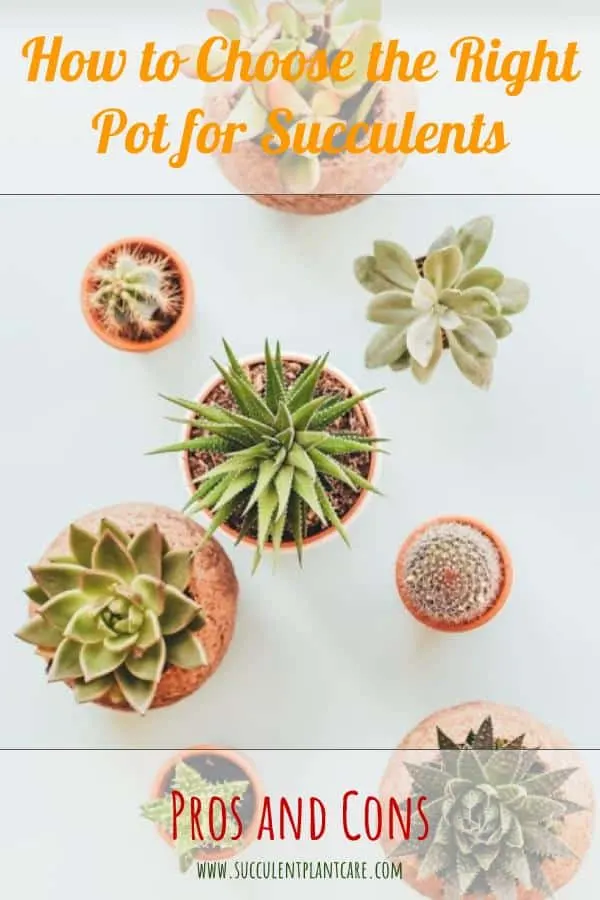Containers for indoor and outdoor use
Even if you do not have a strong preference regarding which type of planters to use for your cacti and succulents, knowing the difference between these containers will help you to decide which ones are more appropriate for what you are looking for.
You want to choose the right containers for your plants not just for aesthetic reasons, but also to ensure proper usage and longevity of your plants’ arrangements. Certain containers may work better for a particular purpose while some planters may not be suitable for the type of project you are putting together.
Here is a quick breakdown of the different materials planters and pots are made from in order to help you decide which one is best for your particular needs.
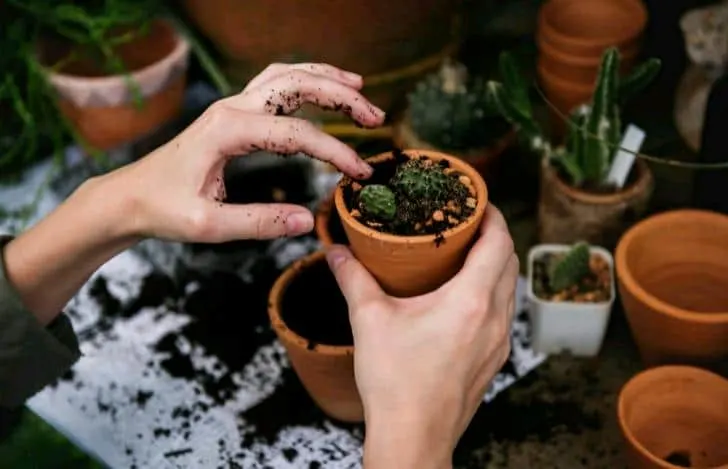
Ceramic
Ceramic pots are made from clay then permanently hardened by heat. Unglazed ceramic pots are porous, which allow air and water movement through the sides of the pot.
The clay also draws moisture from the soil, making ceramic pots a better choice if the plants prefer dry soils or if you have a heavy hand at watering. Glazed ceramic pots do not dry out as quickly and are not as porous, which can restrict air movement from the sides of the pot.
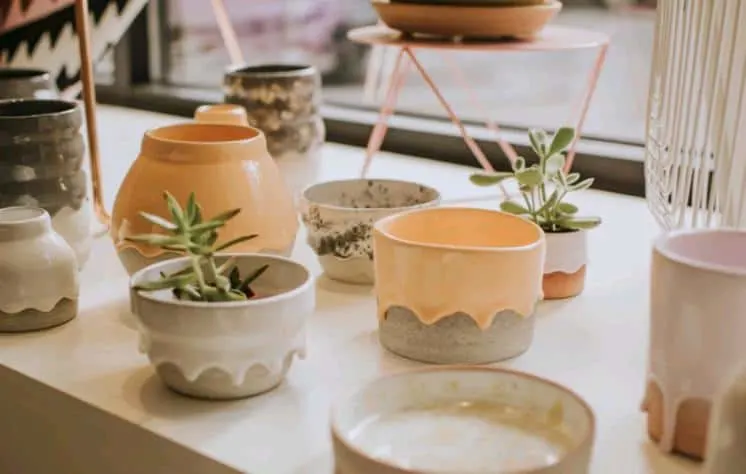
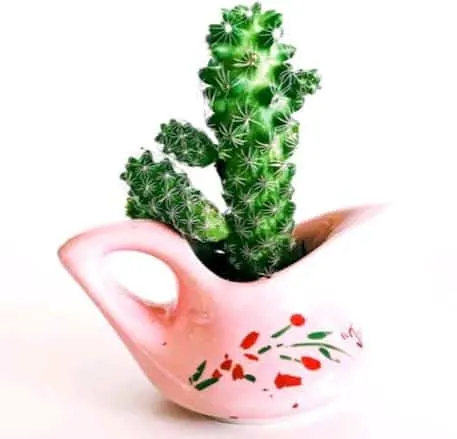
Ceramic pots tend to be thick and heavy, but they can also be costly. The weight of ceramic pots will serve plants that become top heavy very well. Although heavy, ceramic pots can crack when left out in the cold or freezing weather. These pots are not as durable outdoors in the cold. Ceramic pots do protect plants from rapid changes in temperature outdoors because of their thickness. They also hold their weight well and will not be easily blown over by the wind compared to lighter pots.
Pros: Provides some protection from temperature changes; heavy and can hold top heavy plants well; comes in a variety of attractive colors and styles to choose from
Cons: Tend to be on the heavy side; can be more costly; can crack when exposed to cold or freezing temperatures
To see my ceramic pot recommendations, please click on my resource page for ideas.
Terracotta
Terracotta pots are made from clay and are typically unglazed. They are often sold in a reddish brown, earthy color and are widely available as pots and planters in varying shapes and sizes. They are often sold at an affordable price which adds to their appeal.
Unglazed terracotta planters are very permeable, which allows for air and water to pass through the walls of the pot easily. These containers are porous and dry out quickly due to moisture loss from the outside. These pots are good for plants that like dry soils but extra watering may be needed to prevent plants from drying out completely. They tend to be heavy and can crack when exposed to freezing temperatures. When choosing terracotta pots, look for thick walls for more durability.
Pros: Good for plants that like to stay dry; porous material allows for soil to dry out quickly and helps prevent root rot; widely available in different shapes and sizes; affordable; classic and timeless look
Cons: Breakable; can crack when exposed to cold or freezing weather; may need more watering as plants can dry out quickly due to porous material; can get very hot under the heat of the sun and burn plants’ roots
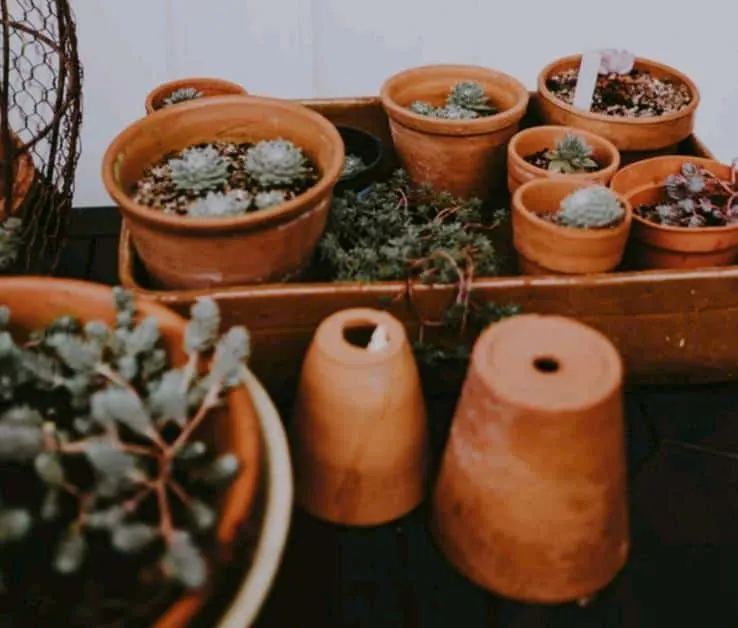
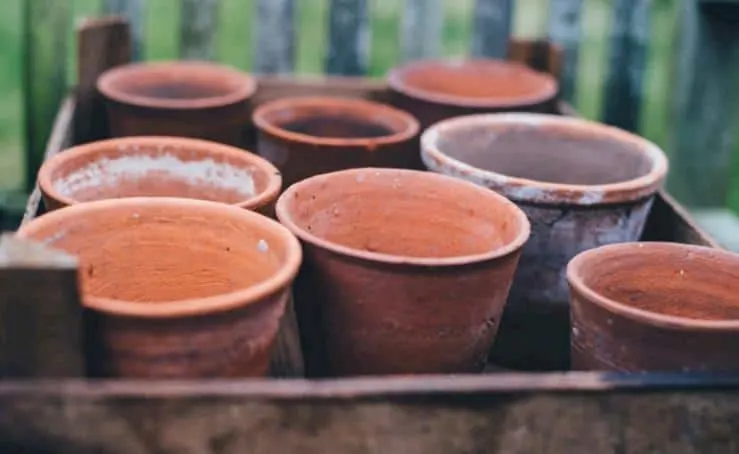
Fiberglass and Resin
Fiberglass planters are made from woven glass fibers and resin materials. These containers come in different shapes and sizes. These planters are often made to resemble stone pots, clay pots, or even wooden planters. These materials are often molded into unusual and unique novelty planters.
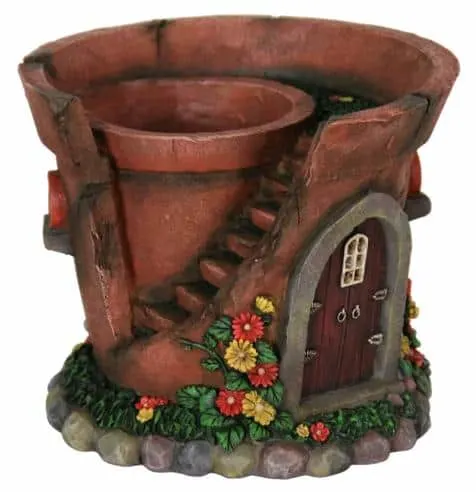
Fiberglass containers are not permeable to water and does not allow water to easily pass through the walls of the containers. These planters are lightweight and durable and can withstand more extreme weather conditions outdoors. Fiberglass and resin containers may sometimes come without a drainage hole, which can be problematic for succulents and cacti that require a dry medium. Drilling drainage holes in the containers can be an option.
Pros: Lightweight material makes it easy to transport; comes in a variety of interesting and unusual shapes, molds styles and colors; resistant to cold weather
Cons: Chips, flakes easily; discolors overtime; not as durable
Plastic
Plastic containers are more affordable and lightweight compared to their pricier counterparts. Like fiberglass planters, plastic containers can also be made to look like stone or terracotta pots. Some people think of plastic as tacky and tasteless, but due to newer technology and design, plastic containers have become much more durable and aesthetically pleasing. Plastic containers can have thicker walls and attractive designs and features that make them very popular and readily available for both indoor and outdoor use.
Plastic containers are not permeable to water, which means water and air does not easily pass through the walls of the containers. Less frequent watering is needed when using plastic containers because water does not escape through the walls of the containers. These containers can withstand more extreme weather conditions outdoors, but they are also lightweight and can blow over in strong winds.
Pros: Lightweight material makes it easy to transport; weather resistant; can be left outside in freezing temperatures; affordable; more durable and less breakable than clay
Cons: Lightweight material does not hold up to strong winds and can be blown over; non-porous material can hold moisture in longer; requires less frequent watering to prevent root rot for cacti and succulents as the soil can stay wet longer; gradually degrades from sunlight
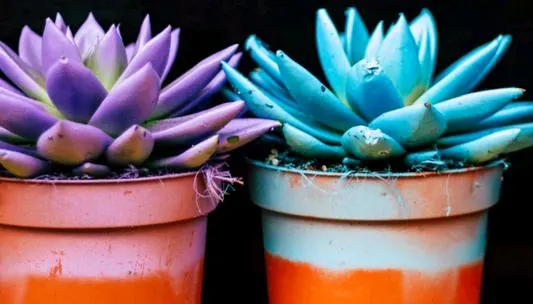
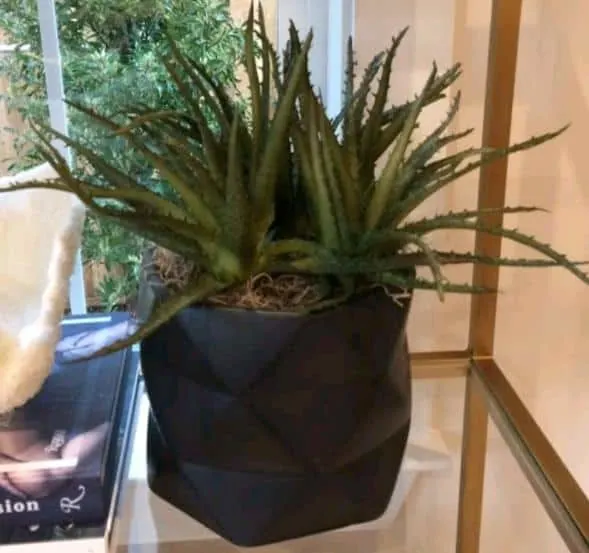
Wood
There are a variety of wooden planters to choose from. If you like the look of wood, it is easy to find wooden containers for your plant arrangements. Wood will not crack and can be left outdoors in cold weather. Wood planters however, are prone to rot. You can use a plastic lining when using wooden planters to prevent rot problems from affecting your plants. Poke some holes in the plastic to allow for water to drain out. Wood can hold moisture in and is slow to dry out. When using plastic to line the wood, plastic also holds moisture in and does not allow water to permeate through the walls of the container. Careful watering is needed to avoid overwatering your cacti and succulents.
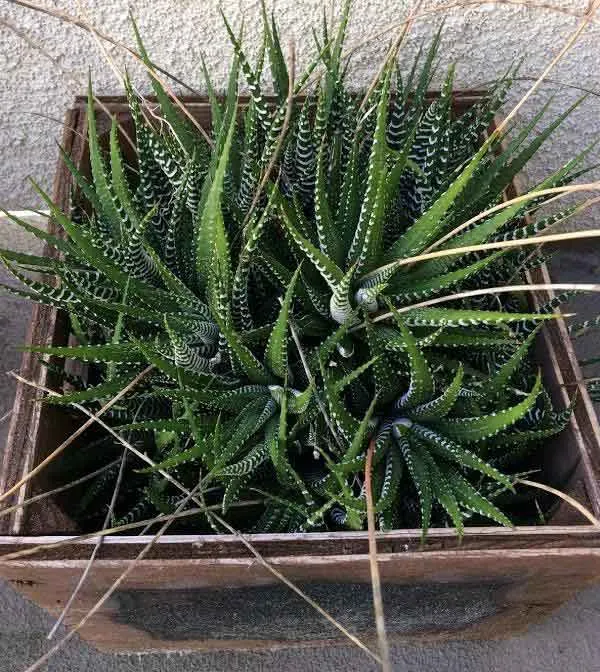
Pros: Cold resistant and can withstand freezing temperatures outside; provides a rustic natural look
Cons: Wood is prone to rot; wood absorbs water and needs to be treated with a water sealant if left outdoors
Metal
Metal containers can provide that certain look that you are going for in your garden. Metal containers are available in varied styles and sizes. Metal containers are highly durable and resistant to the cold weather. Metals such as iron are prone to rusting. Metal containers are sometimes coated to help prevent rusting. If rust is a concern, a yearly application of a weather-resistant sealant can help prevent this problem.
Metal containers tend to absorb heat easily, which can burn the plants when left under the heat of the sun. Some metal containers, such as cast iron, can also be extremely heavy and difficult to move. Most metal containers do not come with a drainage hole. This can be problematic for your succulent and cacti plants because they do not like to sit in water.
Pros: Durable; available in attractive styles and variations; resistant to cold and freezing temperatures
Cons: Susceptible to rust; absorbs heat which can burn the plants or dry them out too quickly; metal containers seldom have drainage holes which can be problematic for cacti and succulents
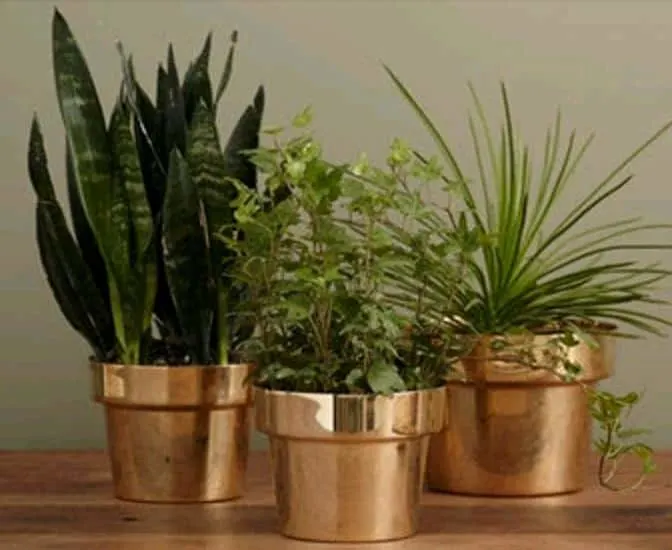
Concrete and Cast-stone
Concrete and cast-stone planters are made to stand the test of time. These planters are typically used outdoors in gardens or commercial settings. These containers are durable and can protect your plants from all sorts of weather conditions. They are heavy and can withstand strong winds but can also be too heavy to be moved around. When using these containers, plan to keep the container on the same spot for a long time.
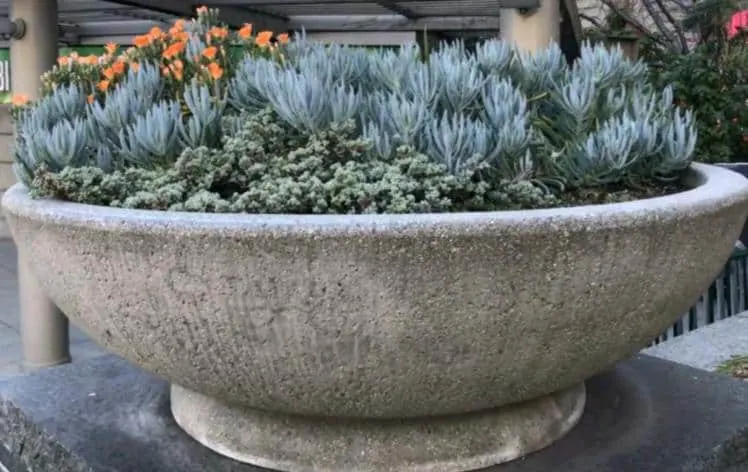
Concrete and cast-stone containers are porous, which allow for water and air to permeate the walls of the containers. Concrete is high in lime, which can alter the pH of your soil. Water the concrete container several times and allow water to drain away excess lime prior to use.
Pros: Durable; good insulator; weather and cold resistant; heavy material can withstand strong winds; porous material allows for water and air to pass through the walls; timeless
Cons: Very heavy and difficult to transport; can be pricey; often comes in large sizes and may only be suitable for large arrangements
Stone
Some stone containers are made from natural stones, some are made of mix limestone and fiberglass. It is often difficult to tell if the container is made from natural stones or other materials. Natural stones tend to be much more expensive and heavy. Stone containers come in a variety of appealing designs. Stone changes color with age and time.
Pros: Durable and solid; weather and cold resistant; good insulator; attractive designs
Cons: Can be pricey; tends to be heavy; breakable when dropped
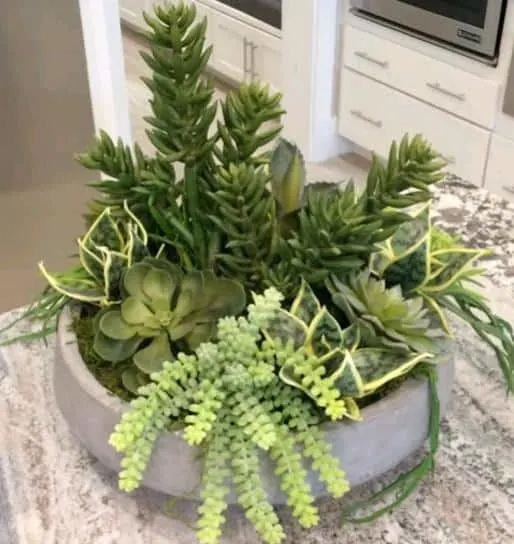
Hanging baskets or Wall-mounted baskets
These containers are eye-catching and usually used for decorative purposes. They look very attractive when used with plants that trail or hang, but they can also be used for other plants and flowers. Hanging baskets come in a variety of materials, or a mixture of different materials such as resin, plastic, coconut fibers, wrought iron, coated wire and metal. They are also available in different price points, from affordable ones to more high-end designs. These containers are more suitable for smaller arrangements that will not become too heavy. Some come with a self watering reservoir, which may not be ideal for cacti and succulents as these plants prefer a drier soil.
Pros: Lightweight material; attractive; affordable; suitable for smaller arrangements and succulents that trail and hang
Cons: Container and plants may be susceptible to damage from high winds when hung in a windy location; can easily heat up or dry out due to wind and sun exposure if left outdoors; some metals are prone to rust
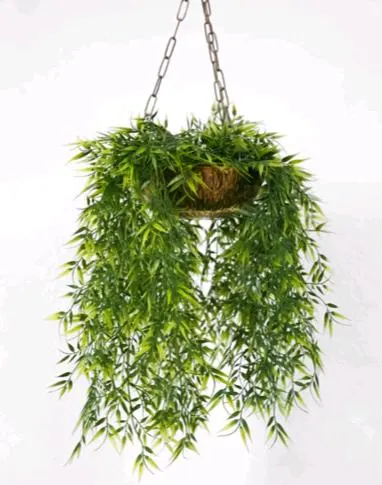
Self-watering pots
Self-watering pots are containers that come with an outer pot or bottom reservoir that holds extra water. Water is pulled from the reservoir into the plants’ root ball as needed. These containers are often made from plastic. Most self-watering containers can hold water for several days or more. These pots can be great for plants that need to stay moist and useful for plants that need frequent watering. They are also handy for people that tend to forget to water their plants.They are typically not ideal for cacti and succulents or other plants that prefer a dry medium. The soil can stay too moist for succulents and cacti which can make them susceptible to root rot. If using for succulents and cacti, extra care is needed not to overwater the plants.
Pros: Suitable for plants that need to be watered often and plants that prefer moist soil; handy for people that tend to forget to water their plants; can reduce the frequency of watering
Cons: Not be suitable for most cacti and succulents or plants that like to stay dry or require a dry soil; extra attention is needed to avoid over watering when using these types of containers for succulents
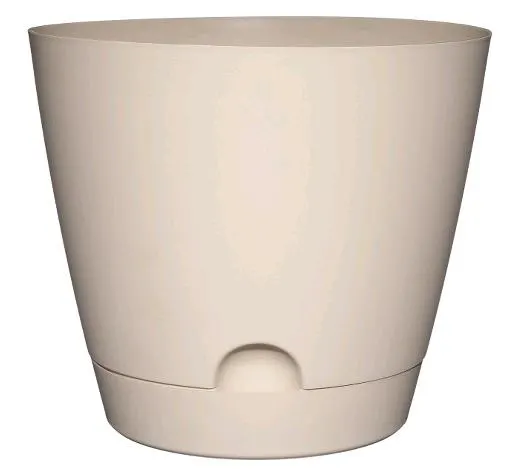
Potting cacti and succulents
Potting your cacti and succulent container garden largely depends on your personal taste and preference. Making your own succulent container garden provides you with an opportunity to have fun with different succulent types, textures, colors and shapes. There are some basic guidelines to follow but there really isn’t one right way of doing it. You can allow yourself to have an enjoyable time putting together your own piece of art.
If you are new to potting here are some basic things you need to know to get started:
- Succulent plants
- Pot or container of your choice (preferably with good drainage)
- Cactus or succulent potting mix (suggestions on how to mix your own can be found here)
- Window screening, paper towel, or coffee filter
- Stones, gravel or marbles for top dressing

The Steps to Potting Succulents are as follows:
- Cut a small piece of window screening, paper towel or coffee filter. This should be big enough to cover the drainage hole/holes of the pot. This will keep you potting soil from falling out of the hole, while allowing for water to drain out.
- Fill the bottom of the pot with potting soil. Add enough soil until it covers the top of the plant’s root balls.
- Place your plants while still in their original pots into the container to get an idea how much soil you need and to see how you want to arrange your plants. You can move your plants around this way until you achieve your desired look. Keep them in their nursery pots while deciding on where to place them to avoid damaging the plants and their roots.
- Once you get a general idea where you want to place your plants, you can go ahead and remove them from their nursery pots. Remove your succulents plants carefully. Try to do this when the soil is dry and hasn’t been watered recently so the plant can slide out easily. Gently turn the plant on its side while supporting the top of the plant with your hand. Slowly pull the plant out of the container. If it won’t budge, try tapping the sides and bottom of the container until the plant comes out. When dealing with spiny and thorny plants, protect your hands by wearing gloves, or using tongs or a piece of foam or fabric.
- Plant the succulents gently in the potting soil. Keep the soil at around the same level the plant was in its original pot. Pack the soil gently around the plants until the plants are securely planted in the potting mix. Fill in the spaces in between the plants and anywhere needed.
- You can finish off your arrangement by putting a top dressing to cover the soil. This will give your arrangement a finished look. Top dressing can also keep the soil in place when watering. Choose a top dressing that will achieve the look that you are going for. If unsure, choose neutral or subtle colors that would go with any design. If you are going for a bolder look, choose a top dressing with contrasting colors.
- Once the top dressing have been added, dust off any potting soil that may have landed on your plants. You can use a soft brush to clean off the dust and debris.
- If the potting soil is dry and the weather conditions are warm and dry, the container can be watered immediately. Hold off on watering if the soil is wet or the plants have just been watered recently.
Other things to consider when potting your succulents:
- Choose plants with similar watering needs when planting in containers. Plants with similar watering needs will go well together and will take away the stress of improper watering. This will ensure survival of the plants and will allow you to water all your plants in that container in the same manner.
- Consider the plants’ hardiness zones. Put plants with the same growing needs together. Try not to mix cold hardy plants with plants that are not, or tropical cactus with desert cactus. Mixing plants that do not have the same growing needs can be deadly to some plants. Putting plants with the same growing needs will make it easier for you to care for them in different seasons.
- Consider lighting requirements of the plants. Place plants with similar lighting requirements together. Whether placing them indoors or outdoors, put plants with the same lighting requirements in the same container. Place sun-loving plants together, plants that need to be in partial shade together, low-light plants together, etc. This will make it easier to find the best spot for your container plants and will make it easier for you to move them around as needed to suit their lighting needs.
Please click on my resource page for recommendations on potting benches and gardening tools.
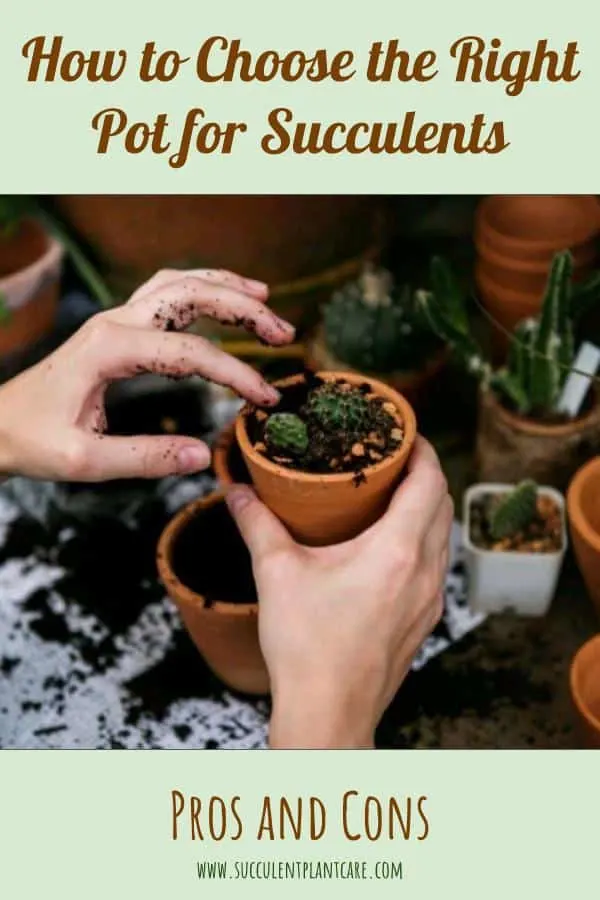
Pin this to save for later or share with others now!
